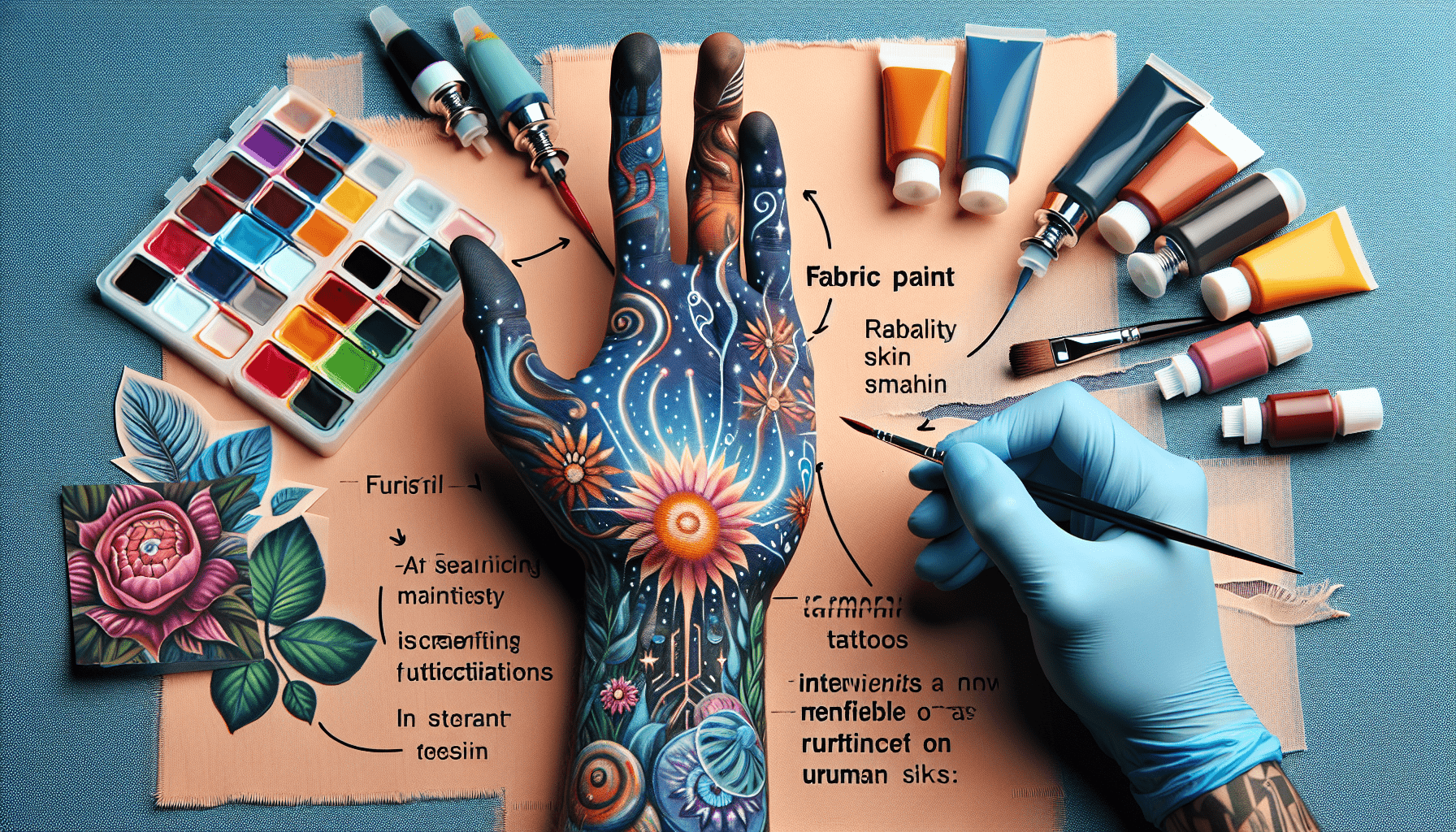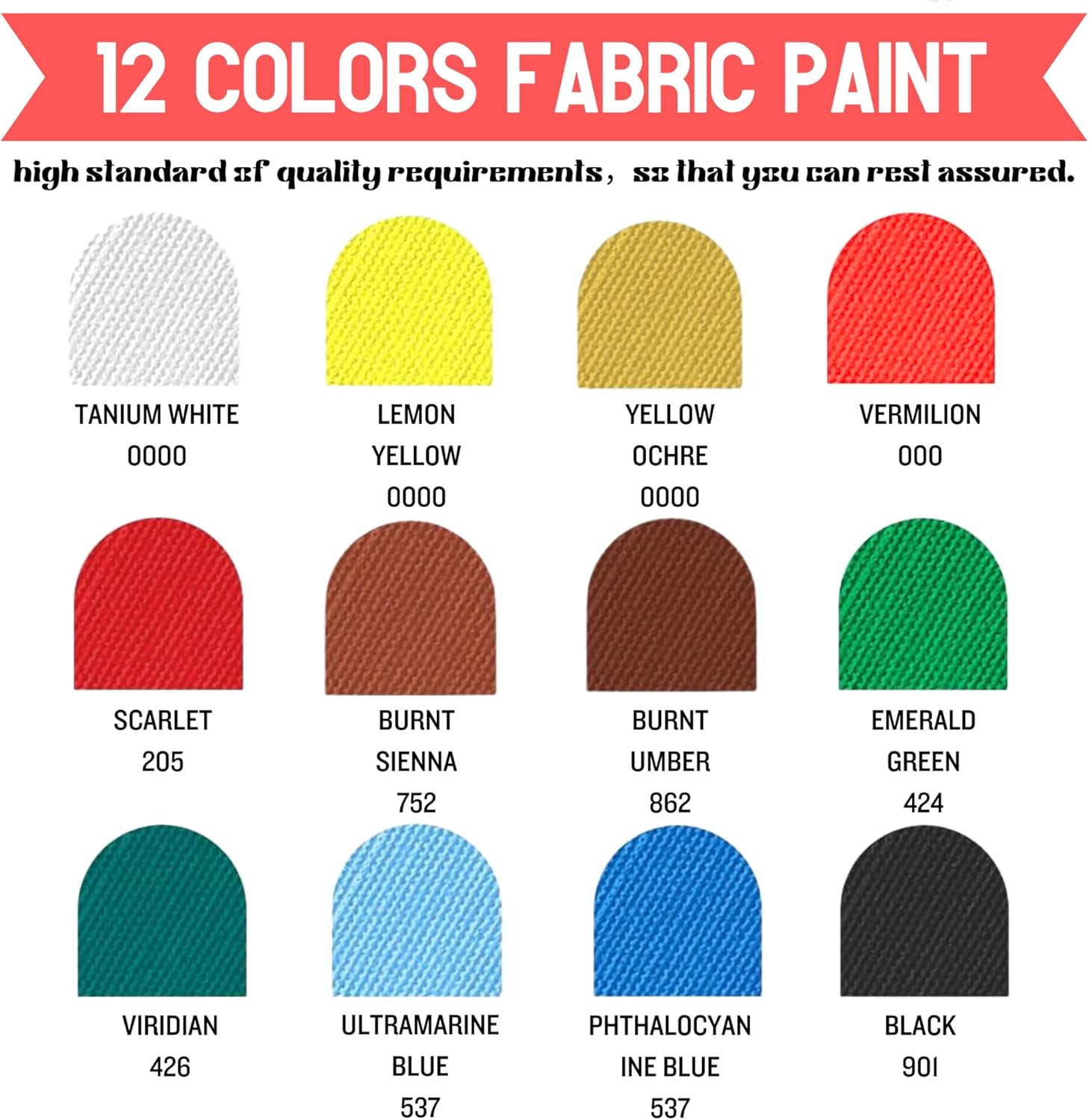Fabric paint is a popular choice for DIY enthusiasts and professionals alike, providing a convenient solution for adding creative designs and colors to various fabrics. However, concerns have been raised regarding the potential toxicity of fabric paint. As you explore this article, we will examine whether fabric paint poses any health risks and discuss the importance of being informed about the potential hazards associated with its use.
What is Fabric Paint?
Fabric paint is a type of paint specifically formulated to adhere to fabric surfaces. It allows individuals to customize and decorate various fabrics, such as clothing, bags, and home textiles, by adding color and designs. Fabric paint offers a versatile and convenient way to express creativity and personalize fabric items. It is commonly used by artists, crafters, and individuals who enjoy do-it-yourself projects.
Definition and Use
Fabric paint is a specialized type of paint that is designed to be applied directly onto fabric surfaces. Unlike traditional paint, fabric paint is formulated to bond with the fabric fibers, creating a durable and long-lasting finish. It is available in various forms, including bottles, tubes, and spray cans, to accommodate different application methods.
Fabric paint can be used on a wide range of fabrics, including cotton, polyester, silk, and blends. It provides a way to add color, patterns, and designs to fabric items, allowing for customization and personalization. It can be used for painting on fabric directly, stenciling, stamping, or even screen printing. The versatility of fabric paint makes it a popular choice for artists, hobbyists, and individuals looking to add a unique touch to their fabric creations.
Common Types of Fabric Paint
There are several types of fabric paint available in the market, each with its own unique properties and characteristics. Some common types of fabric paint include:
-
Acrylic Fabric Paint: Acrylic-based fabric paint is popular due to its versatility and wide range of colors. It provides excellent adhesion to fabric and creates a soft, flexible finish. Acrylic fabric paint is also known for its durability and resistance to fading.
-
Puffy Paint: Puffy paint is a type of fabric paint that creates a three-dimensional effect when dry. It expands and puffs up, adding texture to the design. Puffy paint is ideal for creating raised patterns and embellishments on fabric.
-
Metallic Fabric Paint: Metallic fabric paint contains metallic pigments that give a shiny, reflective finish. It adds a touch of glamour and enhances the appearance of fabric items. Metallic fabric paint is commonly used for decorative purposes and creating metallic effects on fabric surfaces.
-
Glow-in-the-Dark Fabric Paint: This type of fabric paint contains phosphorescent pigments that absorb light and emit a glow in the dark. It is often used for creating unique and eye-catching designs on fabric items, especially for costumes, party decorations, and children’s projects.
Potential Health Concerns
While fabric paint is generally considered safe when used as directed, there are potential health concerns associated with its use. These concerns primarily revolve around the chemical ingredients used in fabric paint, the possible toxicity of these ingredients, and the associated health risks.
Chemical Ingredients
Fabric paint typically contains a variety of chemical ingredients that contribute to its adhesive properties and color pigment. These ingredients can vary depending on the specific type and brand of fabric paint. Common chemical ingredients found in fabric paint include solvents, binding agents, pigments, and additives.
Possible Toxicity
Some of the chemical ingredients used in fabric paint have the potential to be toxic if ingested, inhaled, or absorbed through the skin. The toxicity of these ingredients can vary, and it is essential to consider the concentration and potential exposure levels when assessing the overall risk.
Health Risks
Exposure to certain chemicals found in fabric paint can pose health risks. Potential health effects can range from mild irritations, such as skin or eye irritation, to more serious health issues, including respiratory problems, organ damage, or developmental and reproductive harm. It is important to be aware of these potential risks and take necessary precautions to minimize exposure.

Regulatory Standards and Testing
To ensure the safety of fabric paint, regulatory bodies and industry organizations have established standards and testing methods. These standards and testing methods aim to regulate the use of chemicals in fabric paint and assess their potential risks to human health.
Consumer Product Safety Commission (CPSC)
In the United States, the Consumer Product Safety Commission (CPSC) is responsible for regulating consumer products and ensuring their safety. The CPSC sets regulations and guidelines for fabric paint, including restrictions on certain chemicals and labeling requirements. Fabric paint manufacturers are required to comply with CPSC regulations to ensure the safety of their products.
ASTM International Standards
ASTM International is an organization that develops and publishes voluntary consensus on technical standards. They have established standards specific to fabric paints, such as ASTM D4236, which provides guidelines for labeling and testing the safety of art materials, including fabric paint. These standards help manufacturers ensure their products meet certain safety criteria.
Testing Methods
Fabric paint manufacturers often conduct various tests to assess the safety and quality of their products. These tests can include chemical analysis, skin irritancy testing, acute toxicity testing, and inhalation studies, among others. By conducting these tests, manufacturers can identify potential risks and make informed decisions regarding product formulation and labeling.
Understanding Toxicity
To fully comprehend the potential health risks associated with fabric paint, it is important to understand the concept of toxicity and its implications for human health.
Defining Toxicity
Toxicity refers to the ability of a substance to cause harm or damage to living organisms. The degree of toxicity can vary depending on factors such as the toxic substance’s concentration, duration of exposure, and route of exposure (e.g., inhalation, ingestion, or skin contact).
Health Effects of Toxic Substances
Toxic substances can cause a range of health effects, depending on their chemical properties and the organs or body systems they affect. These effects can be immediate or occur over a longer period following exposure. Some common health effects associated with toxic substances found in fabric paint can include skin irritations, allergic reactions, respiratory problems, headaches, nausea, and even long-term health issues such as organ damage or certain types of cancer.

Specific Fabric Paint Chemicals
Fabric paint can contain various chemicals that may pose potential health risks. It is important to be aware of these chemicals and their respective hazards.
Aromatic Hydrocarbons
Some fabric paints may contain aromatic hydrocarbons, such as toluene and xylene, which are solvents used to dissolve the paint pigments. These compounds have been associated with adverse health effects, including respiratory irritation, central nervous system effects, and potential developmental and reproductive harm.
Heavy Metals
Certain fabric paints may contain heavy metals, such as lead, cadmium, and chromium, as color pigments. Exposure to these heavy metals can be toxic and may lead to various health problems, including kidney damage, central nervous system disorders, and even cancer. It is crucial to avoid prolonged skin contact or ingestion of paint that contains heavy metals.
Formaldehyde
Formaldehyde is a chemical commonly found in fabric paint as a preservative or antimicrobial agent. It is a known respiratory and dermal sensitizer and may cause allergic reactions in some individuals. Prolonged exposure to formaldehyde can lead to respiratory problems, eye irritation, and potentially even certain types of cancer.
Phthalates
Some fabric paints may contain phthalates, a group of chemicals used as plasticizers to make the paint more flexible and durable. Phthalates have been linked to hormonal disruption, reproductive issues, and developmental abnormalities. Although some phthalates are restricted or banned in certain countries, it is essential to be cautious when using fabric paints that may contain these chemicals.
Hazardous Air Pollutants
Fabric paint can emit volatile organic compounds (VOCs) and hazardous air pollutants (HAPs) during application and drying. These pollutants contribute to indoor air pollution and can cause respiratory irritation, headaches, and other health problems. Proper ventilation is essential to minimize exposure to VOCs and HAPs when using fabric paint.
Potential Risks for Different User Groups
Certain user groups may be more susceptible to the potential health risks associated with fabric paint. It is important to be aware of these risks and take appropriate precautions, especially for vulnerable populations.
Adults
While fabric paint can pose potential health risks for adults, the risks are generally lower due to their developed immune systems and ability to take necessary precautions. However, individuals with pre-existing health conditions, such as respiratory issues or chemical sensitivities, should exercise extra caution when using fabric paint and consider alternative options.
Children
Children are more susceptible to the potential health risks of fabric paint due to their smaller body size, developing immune systems, and tendency to put objects in their mouths. It is crucial to closely supervise children when using fabric paint and ensure they do not ingest or excessively come into contact with the paint. Non-toxic and child-safe fabric paints are available as a safer alternative for children.
Pregnant Women
Pregnant women should exercise caution when using fabric paint due to the potential risks associated with certain chemicals. Exposure to harmful substances found in fabric paint can potentially affect fetal development. It is advisable for pregnant women to limit their exposure to fabric paint and opt for safer alternatives, especially during the early stages of pregnancy.
People with Allergies or Sensitivities
Individuals with known allergies or sensitivities may be more prone to adverse reactions when exposed to fabric paint. Allergic reactions, such as skin rashes, respiratory problems, or eye irritations, can occur due to sensitization to specific paint chemicals. It is important for individuals with allergies or sensitivities to carefully read labels, test for any adverse reactions, and consider alternative products that are specifically formulated for sensitive individuals.
Mitigating Risks and Safe Use
To minimize the potential risks associated with fabric paint, it is important to follow safety guidelines and take necessary precautions when using fabric paint.
Reading Labels and Safety Information
Before using fabric paint, it is crucial to carefully read the labels and safety information provided by the manufacturer. This information will outline any specific precautions or warnings related to the product. Look for fabric paints that are labeled as non-toxic, low VOC, or specifically designed for sensitive individuals if you have any concerns about potential risks.
Ventilation and Work Area
When using fabric paint, ensure that you are in a well-ventilated area. Open windows or use fans to promote air circulation and minimize exposure to potentially harmful fumes. If possible, consider working outside or in a well-ventilated workshop to further reduce the concentration of airborne chemicals.
Protective Equipment
Using appropriate personal protective equipment (PPE) can further minimize the potential risks associated with fabric paint. Wear gloves to protect your hands from direct contact with the paint, especially if you have sensitive or broken skin. Additionally, consider wearing an apron or protective clothing to prevent splashes or spills on your skin or clothes.
Proper Disposal
Dispose of fabric paint and related materials properly after use. Follow local regulations for disposing of hazardous or potentially hazardous waste. Avoid pouring fabric paint or rinsing brushes and containers in sinks or drains, as this can contaminate water sources. Instead, consult local recycling centers or hazardous waste collection facilities for proper disposal methods.
Alternatives to Toxic Fabric Paint
For individuals concerned about the potential toxicity of fabric paint, there are alternative options available that offer safer alternatives for fabric customization and decoration.
Natural and Organic Fabric Dyes
Natural and organic fabric dyes utilize plant-based or low-toxicity ingredients to color fabrics. These dyes offer a safer alternative to traditional fabric paints, as they are often derived from natural sources and have minimal or no harmful chemicals. They can create vibrant and long-lasting colors on various fabric materials.
Non-Toxic Fabric Markers
Non-toxic fabric markers are another alternative to fabric paint that offers safer and more precise application. These markers contain low or no toxic chemicals and are specifically formulated for use on fabric surfaces. Non-toxic fabric markers provide an easy and convenient way to add color and designs to fabric items, without the need for brushes or additional tools.
Eco-Friendly Printing Techniques
Eco-friendly printing techniques, such as water-based screen printing or block printing, can be used to decorate fabric without the use of toxic fabric paints. These techniques utilize water-based inks or natural dyes to create designs on fabric surfaces. They offer a sustainable and safer approach to fabric customization while minimizing the environmental impact.
Personal Responsibility and Awareness
In conclusion, it is essential for individuals to take personal responsibility in understanding the potential risks associated with fabric paint and making informed choices to prioritize their health and safety.
Making Informed Choices
By educating yourself about the potential health risks and considering alternative options, you can make informed choices when using fabric paint. Read product labels, research the specific chemicals used, and select products that align with your personal preferences and health concerns.
Staying Educated
Stay updated on the latest information regarding fabric paint safety and toxicity. Be aware of any new regulations, studies, or guidelines related to fabric paint and its ingredients. By staying informed, you can make better decisions and adjust your practices accordingly.
Advocating for Safer Products
As a consumer, you have the power to influence the market. By advocating for safer products and supporting companies that prioritize safety, you can drive the demand for non-toxic fabric paints and encourage manufacturers to develop and promote safer alternatives.
Conclusion
Fabric paint provides a creative and versatile way to personalize fabric items. While it offers numerous possibilities for customization, it is important to understand the potential health risks associated with certain fabric paint chemicals. By being aware of the chemical ingredients, regulatory standards, and potential risks, individuals can make informed choices, take necessary precautions, and explore alternative options to mitigate any potential hazards. Taking personal responsibility, staying educated, and promoting safer products can contribute to a safer and healthier experience when using fabric paint.



